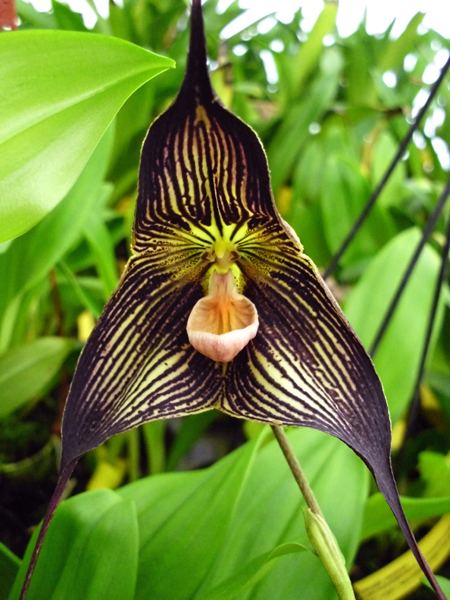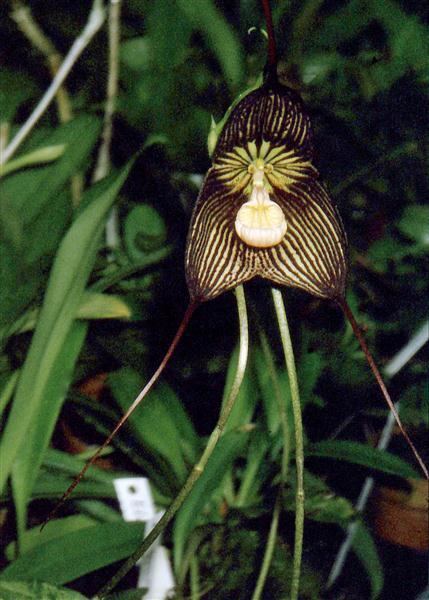Family Orchidaceae Tribe Epidendreae | Subtribe Pleurothallidinae Rank Species | |
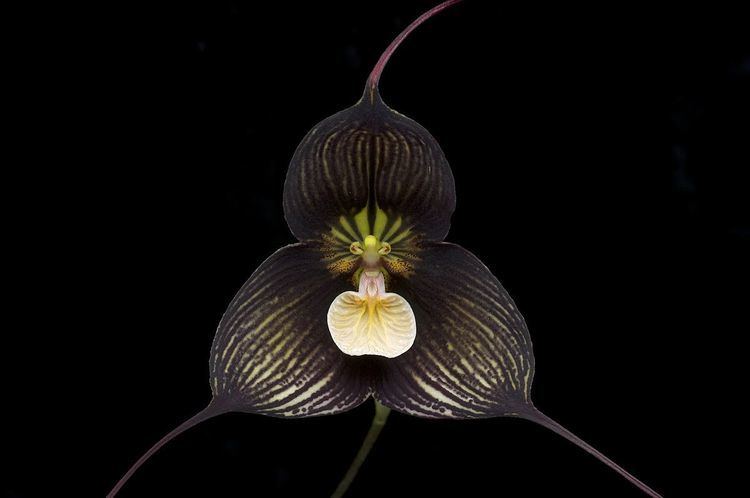 | ||
Similar Dracula, Dracula gigas, Dracula cordobae, Dracula chimaera, Dracula bella | ||
Orchid update dracula vampira orchid the black orchid with two flowers how to culture tips
Dracula vampira is an epiphytic orchid species, endemic to Ecuador.
Contents
- Orchid update dracula vampira orchid the black orchid with two flowers how to culture tips
- Update dracula vampira and the sad masdevallia orchid
- Description
- Distribution
- Ecology
- Conservation
- References
Update dracula vampira and the sad masdevallia orchid
Description
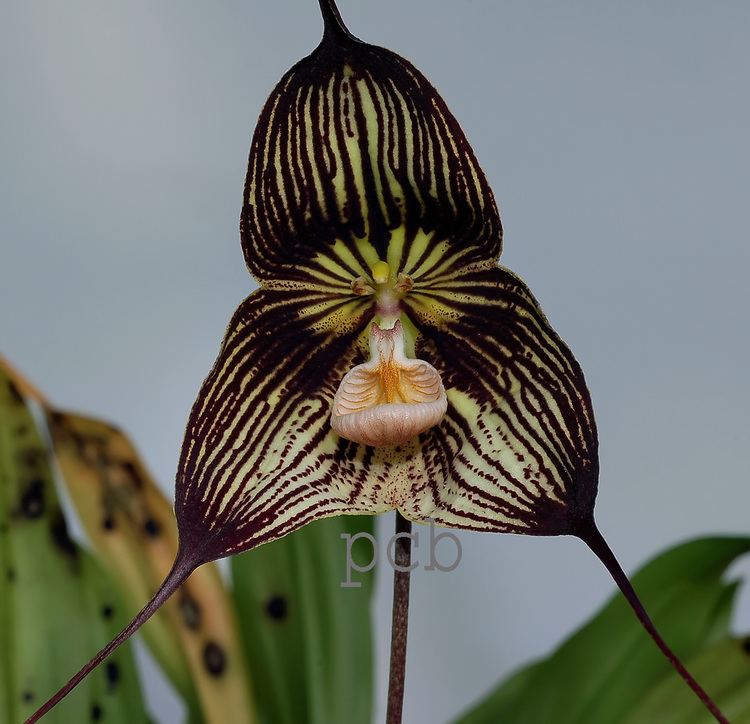
The orchid has large distinctive flowers; the sepals are rounded with the top corner pulled into a thin tail, which may extend up to 11 cm in length. Although green in colour, the sepals are covered by numerous blackish purple veins and the tails are almost completely black. The large sepals dwarf the petals and lip of the flower, which are white in colour and marked with purple and pinkish veins respectively. Dracula vampira is a large epiphyte, meaning that it does not grow in soil, it has many stems; the erect leaves are between 15 and 28 cm long. The generic name of this species - Dracula means little dragon, named due to the exotic flower shape.
Distribution
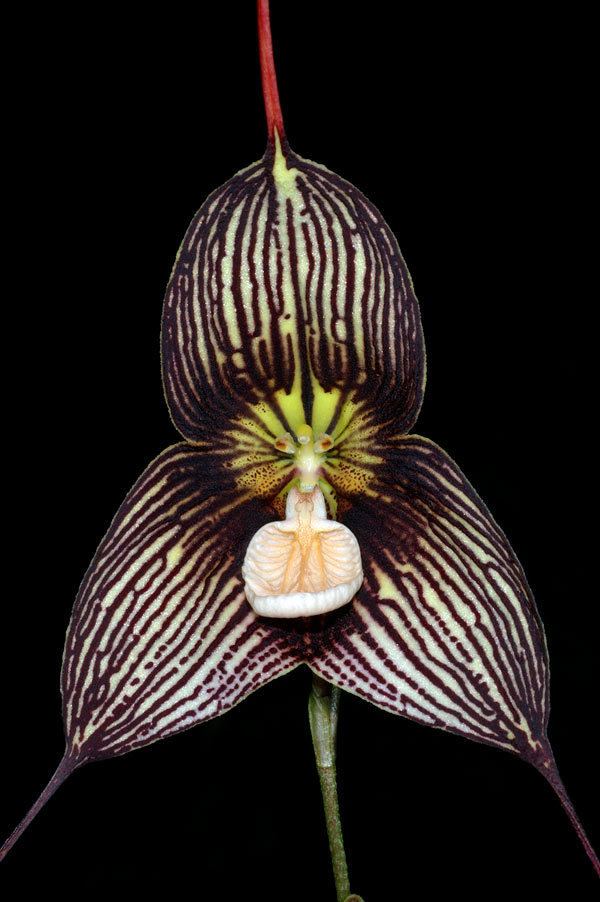
Dracula vampira is endemic to Ecuador in South America being found only on the slopes of Mount Pichincha. It is found between 1900 and 2200 metres above sea level, where it is fairly locally abundant.
Ecology
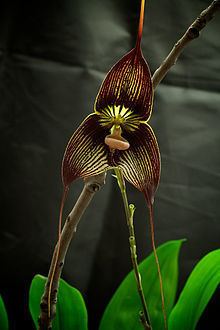
As an epiphyte D. vampira does not grow in soil, instead it grows on the lower sections of trees on the forested mountainside; many plants may accumulate on damp, leaf litter.
Conservation
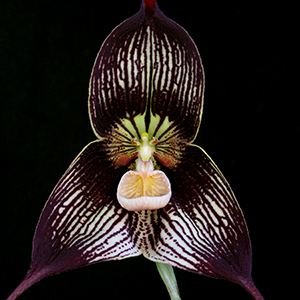
Dracula vampira was classified as Vulnerable on the 1997 IUCN Red List of Threatened Plants, (although this status no longer applies) and listed on Appendix II of CITES, together with almost all orchids. It is popular in cultivation for its extremely dramatic, large flowers.

